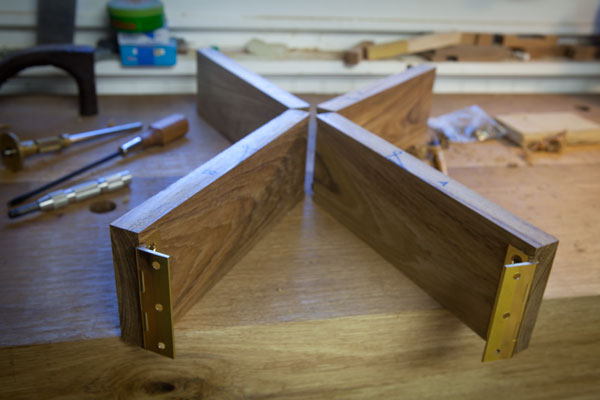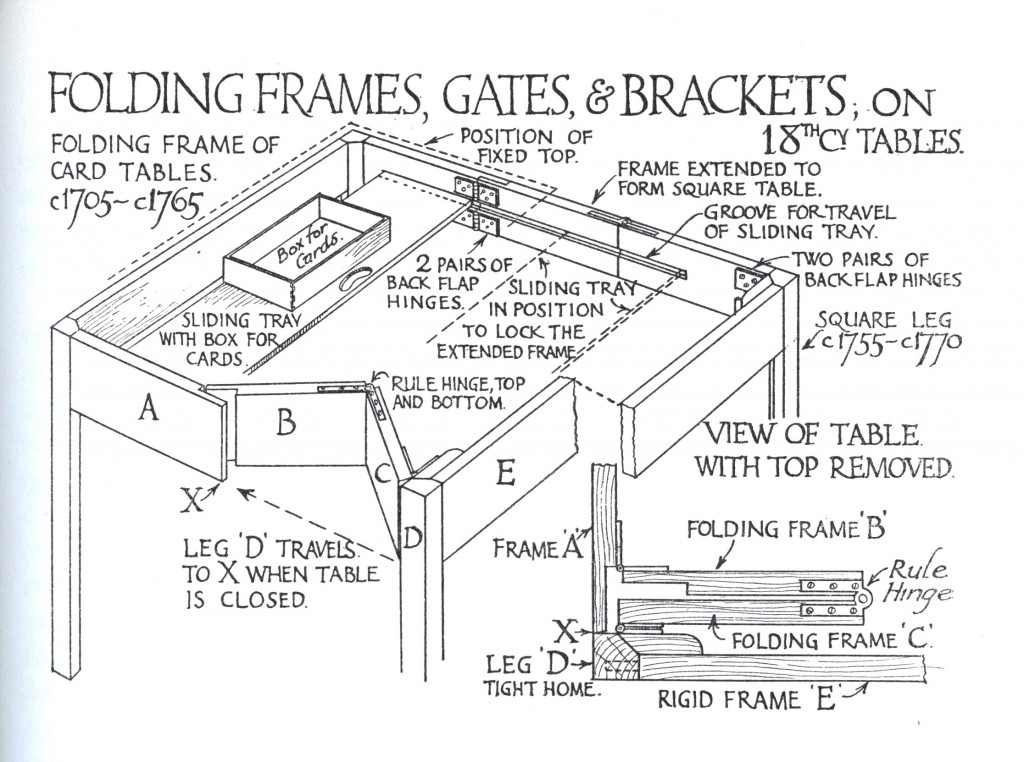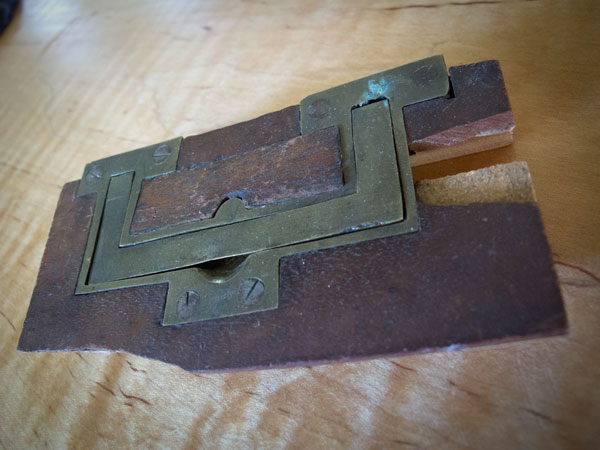We may receive a commission when you use our affiliate links. However, this does not impact our recommendations.
During the last two years my woodworking has been consumed with furniture in the campaign style from Great Britain. One of the many cool aspects of this style of furniture is that many of the pieces fold up for transport.
Last week I finished building a teak folding officer’s field desk from about 1830. The side aprons of the base fold in to make a base that goes from 21” deep to only 4” deep in less than two seconds. It’s a clever mechanism you can see it in action in this short video.
And while the mechanism is cool, it’s nothing compared to the clever mechanism shown in John C. Rogers’ book “English Furniture” (Country Life Limited) from 1923.
The mechanism shown for 18th-century card tables conceals the fact that it folds flat – both when it is open and it it closed.
Take a look at the drawing.
When fully open, the two rabbeted aprons come together to conceal one of the folding seams in the apron. When the table is folded shut, one of these rabbeted aprons extends out to cover the mechanism inside. Very clever.
These mechanisms can be so clever that sometimes they are forgotten and go unnoticed for decades or even a century. When I was visiting an antiques dealer last month the owners of the shop – the Clarke brothers – showed me a davenport they had bought from another dealer in the trade.
The Clarkes suspected that because of the maker’s label on the piece that it was a piece of campaign furniture that broke down for transport. The other dealer swore he had been over the entire piece and it was not a piece that disassembled.
The Clarkes brought the davenport into their workshop and soon enough, the piece was in five pieces, just as they suspected.
This is one of the common stories with campaign furniture – sometimes the mechanism is so clever that it goes unnoticed by new owners.
But the other common story with campaign furniture is less enthralling. A lot of it was busted up into bits so the wood could be used to build more fashionable pieces. While I was in England this summer one woodworker gave me a cool 18th-century pull that had been salvaged from a busted-up campaign chest.
Kinda sad.
— Christopher Schwarz
Here are some supplies and tools we find essential in our everyday work around the shop. We may receive a commission from sales referred by our links; however, we have carefully selected these products for their usefulness and quality.












I’d like to build a similar table to be used in our parlor as a temporary dining table. Does anyone know of a SketchUp drawing for this? If not, do you know of any folks who would create a Sketchup draw of the table for a reasonable fee?
Chris –
Yes, sad. However, a great example for some new made to order hardware for that “special” piece!
Here’s another take on campaign table from “Pegs and Tails” Jack Plane
http://pegsandtails.wordpress.com/2010/09/21/making-a-campaign-table-%E2%80%93-part-three/
part 1 and 2 detail some other tables and making of the Paduak top
There’s a folding card table with a similar mechanism at 7:00 in this video:
http://youtu.be/82JFOL5tGiE
Schwarz is awesome–I’m not even a woodworker but I read his Anarchist’s Tool Box book because I was intrigued by the title. Now I read his blog too. I wish he was my neighbor–talk about great conversations over the fence. I’d try to twist his arm and get him to open up a Time Store with me.
Presumably the top for this table was hinged and the moving bit folded back over the top of the fixed bit rather than down over the front. Hayward says that a special hinge with one leaf longer than the other is used and these are still available here. This is called a rule joint because in section it looks like the hinge used on old, folding boxwood rules. The hinge knuckle is buried in the moving part of the top so that a smooth surface is presented in the open position. The edges of the top have a concave rounded section on one piece and a rounded convex section on the other so when closed the hinges and the join is hidden.
Yes it is sad that lovely old furniture and many other lovely things were destroyed here.. I think that in the past many English people just did not value old things perhaps because of the severe austerity after WW2, ignorance or because we are so surrounded by old things that we become over familliar with them. In my small town in Wiltshire some fifty years ago they ripped out five medieval streets, re-routed the main road and built a nasty row of shops. Destroying these beautiful old houses was regarded as progress. Attitudes have changed partly because of better education and also because of a TV program called “The Antiques Road Show” that is screened at prime time because it is so popular.
Good wood connecting to all. Bernard
There’s a gaming table that more or less does the same thing (specifics notwithstanding) in the Bavarian National Museum in Munich.